
This edition published in 2013 by Arcturus Publishing Limited
26/27 Bickels Yard, 151153 Bermondsey Street,
London SE1 3HA Copyright 2010 Arcturus Publishing Limited Puzzles copyright 2010 Puzzle Press Ltd All rights reserved. No part of this publication may be reproduced, stored in a retrieval system, or transmitted, in any form or by any means, electronic, mechanical, photocopying, recording or otherwise, without written permission in accordance with the provisions of the Copyright Act 1956 (as amended). Any person or persons who do any unauthorised act in relation to this publication may be liable to criminal prosecution and civil claims for damages. ISBN: 978-1-78212-263-0
CONTENTS
INTRODUCTION
Our brain is undoubtedly our greatest asset, yet for many of us it is the part of the body we tend to take most for granted. We might eat the right foods and take regular exercise to keep us in shape physically, but we do little to maintain or indeed improve our brainpower. Nows your chance to change this and develop a capacity for thinking that will greatly increase your ability to solve seemingly intractable problems.
Whether you are more creative than logical or vice versa, the enjoyable challenges presented in this superlative compendium will have you thinking outside the box. WHATS IN THIS BOOKLateral Thinking includes a mixture of three categories of puzzles and challenges, indicated by symbols. The puzzles enable various types of mental activity to be developed and in the process smooth out left- or right-sided brain bias. The three categories are: PUZZLES TO INCREASE LEFT-SIDE BRAIN FUNCTION Designed to develop our powers of concentration but requiring no specialized knowledge beyond the ability to think clearly and analytically as well as to test and strengthen, our numerical and/or arithmetic skills. PUZZLES TO INCREASE RIGHT-SIDE BRAIN FUNCTION Designed to develop our creative potential, these puzzles have the capacity to change our natural or traditional perceptions and help us to find solutions to unusual or especially challenging problems. PUZZLES TO INCREASE WHOLE-BRAIN FUNCTION Memory is an essential brain function, and one these puzzles are designed to strengthen.
Puzzles involving a high degree of tactical reasoning enhance whole-brain function, and so many of this type are included, too. TAKE YOUR TIME!
Alongside the puzzles and activities we have provided a timer to prompt you to keep track of how long it takes you to complete each task. Record your start and finish times on the clock faces. Once you understand the solving process you should notice that it takes you less time to complete a particular type of puzzle.
SOLVING THE PUZZLES Not all of the puzzles will be familiar to you, so on the following pages we have provided an explanation of what is required to complete each puzzle, together with an example of a solved puzzle, where appropriate. But dont worry if you come across puzzles you cant complete there is a Solutions section at the back of the book.
You can go directly to the solution of a puzzle by clicking on the puzzle title, and return to the puzzle by clicking on the solution number.
Study the shapes carefully. Which is the odd one out? Here is an example:
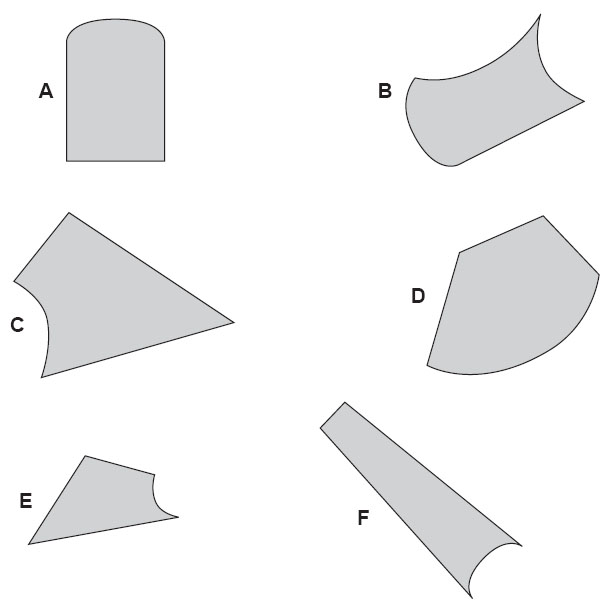
Solution B It has three curved sides, the others have only one.
Example: In Sequence Study the sequence carefully. Which of the alternatives should take the place of the question mark? Here is an example:
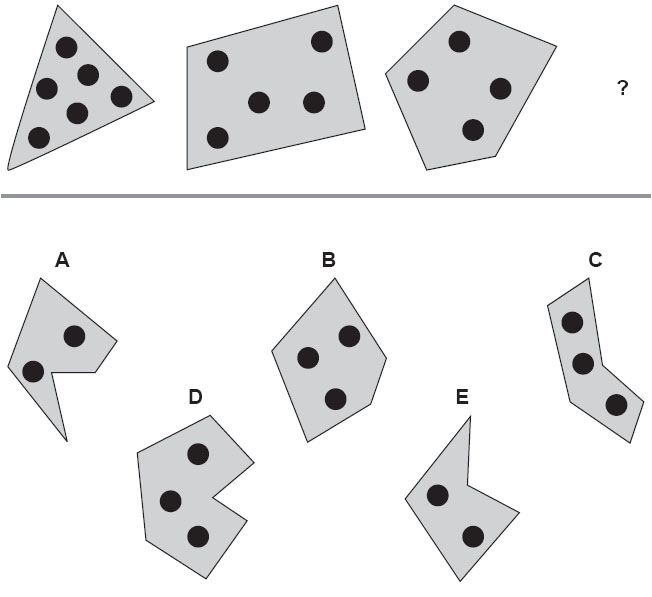
Solution C The number of sides in each figure increases by one each time and the number of circles reduces by one each time.
Example: Folding Cubes Being able to envisage how a flat shape might look when folded is another form of creative thinking right-brain exercise as it involves being able to visualise a three-dimensional shape, from an image that is present only in two-dimensional format.
Here is an example: 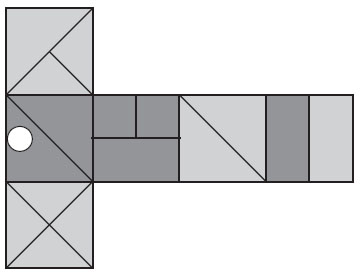 When the above is folded to form a cube, which is the only one of the following that can be produced?
When the above is folded to form a cube, which is the only one of the following that can be produced? 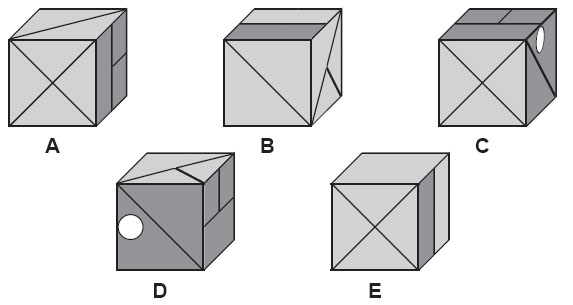 Solution D Example: Memory Study each puzzle for the number of minutes shown, then cick either of the links named 'Turn to Question', answering the question(s) that you find there. Here is an example, indicating that you would need to study the puzzle for two minutes and then click on either of the links named 'Turn to Question', and answer the question on the corresponding page. Please note: Links in this example are for illustration only - the relevant 'Question' section is found at the bottom of this page.
Solution D Example: Memory Study each puzzle for the number of minutes shown, then cick either of the links named 'Turn to Question', answering the question(s) that you find there. Here is an example, indicating that you would need to study the puzzle for two minutes and then click on either of the links named 'Turn to Question', and answer the question on the corresponding page. Please note: Links in this example are for illustration only - the relevant 'Question' section is found at the bottom of this page. 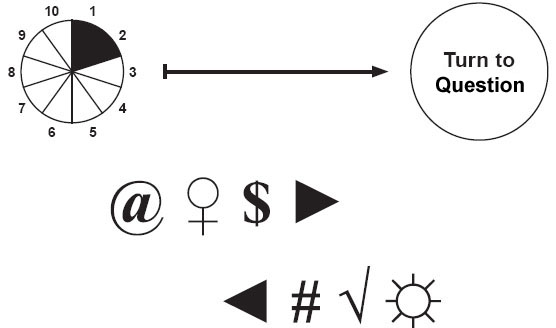 (see below)
(see below)
Question Which two symbols have changed places?
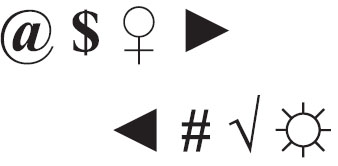
 Odd One Out
Odd One Out Study the shapes carefully. Which is the odd one out?

 In Sequence
In Sequence Study the sequence carefully. Which of the alternatives should take the place of the question mark?
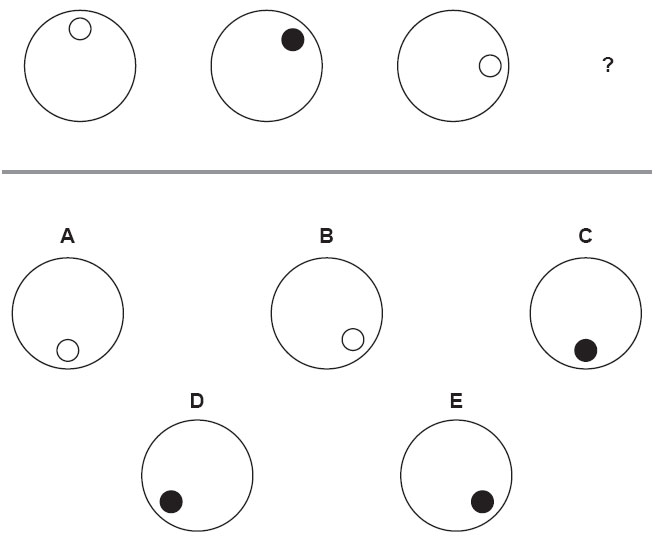
 Folding Cubes
Folding Cubes When the shape below is folded to form a cube, which is the only one of the following that can be produced?
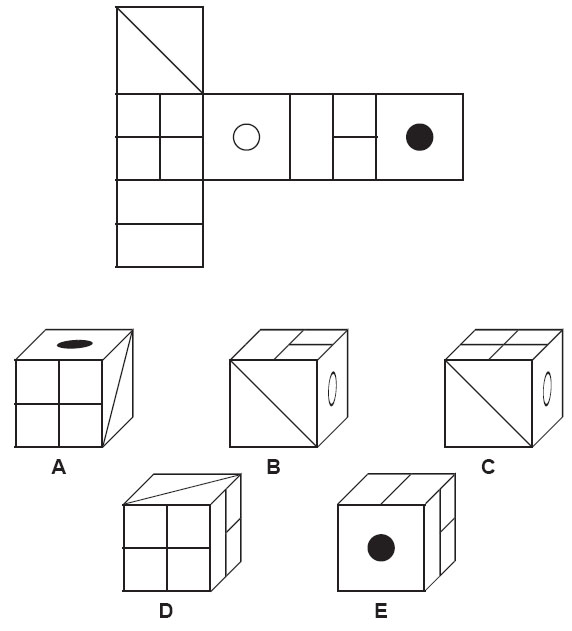 PUZZLE 4MemoryMemoryPuzzle 48
PUZZLE 4MemoryMemoryPuzzle 48 Which of the following four numbers appear next to each other in the same order in the sequence?



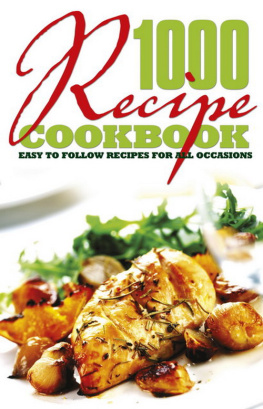
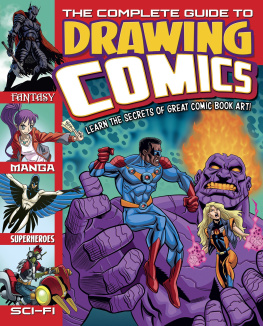

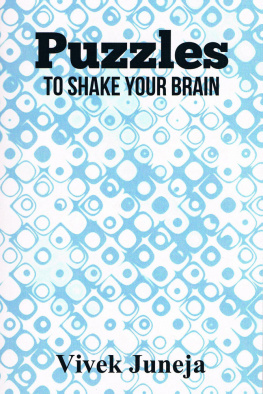
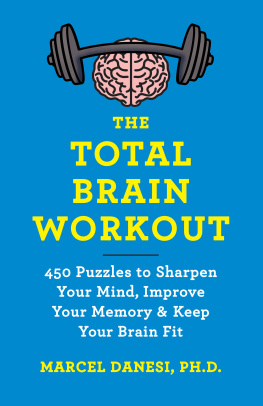
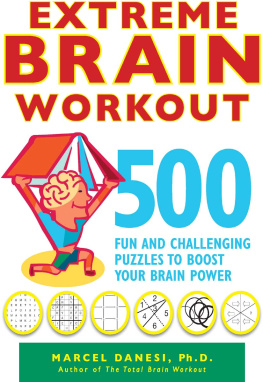
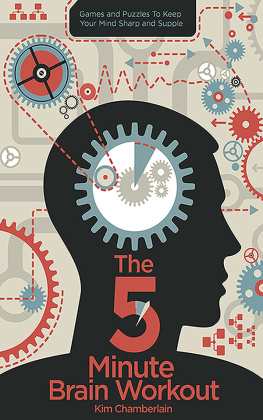
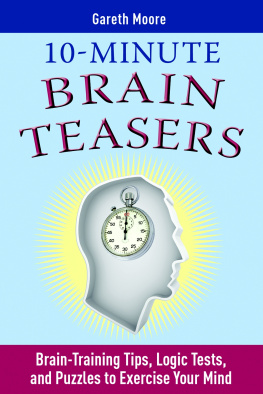
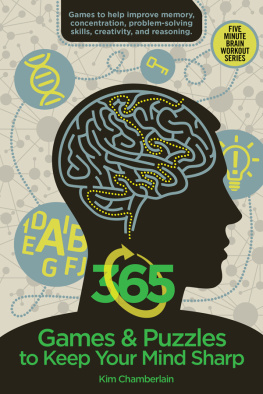
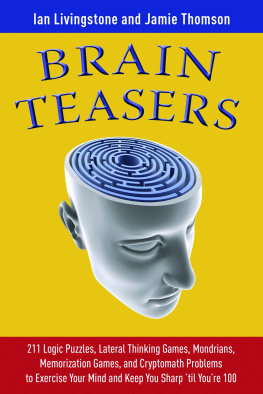
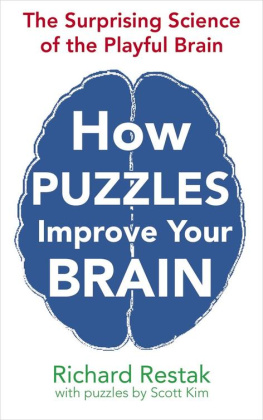




 Solution B It has three curved sides, the others have only one. Example: In Sequence Study the sequence carefully. Which of the alternatives should take the place of the question mark? Here is an example:
Solution B It has three curved sides, the others have only one. Example: In Sequence Study the sequence carefully. Which of the alternatives should take the place of the question mark? Here is an example:  Solution C The number of sides in each figure increases by one each time and the number of circles reduces by one each time. Example: Folding Cubes Being able to envisage how a flat shape might look when folded is another form of creative thinking right-brain exercise as it involves being able to visualise a three-dimensional shape, from an image that is present only in two-dimensional format.
Solution C The number of sides in each figure increases by one each time and the number of circles reduces by one each time. Example: Folding Cubes Being able to envisage how a flat shape might look when folded is another form of creative thinking right-brain exercise as it involves being able to visualise a three-dimensional shape, from an image that is present only in two-dimensional format.  When the above is folded to form a cube, which is the only one of the following that can be produced?
When the above is folded to form a cube, which is the only one of the following that can be produced?  Solution D Example: Memory Study each puzzle for the number of minutes shown, then cick either of the links named 'Turn to Question', answering the question(s) that you find there. Here is an example, indicating that you would need to study the puzzle for two minutes and then click on either of the links named 'Turn to Question', and answer the question on the corresponding page. Please note: Links in this example are for illustration only - the relevant 'Question' section is found at the bottom of this page.
Solution D Example: Memory Study each puzzle for the number of minutes shown, then cick either of the links named 'Turn to Question', answering the question(s) that you find there. Here is an example, indicating that you would need to study the puzzle for two minutes and then click on either of the links named 'Turn to Question', and answer the question on the corresponding page. Please note: Links in this example are for illustration only - the relevant 'Question' section is found at the bottom of this page.  (see below)
(see below)
 Odd One Out Study the shapes carefully. Which is the odd one out?
Odd One Out Study the shapes carefully. Which is the odd one out? 

 PUZZLE 4MemoryMemoryPuzzle 48 Which of the following four numbers appear next to each other in the same order in the sequence?
PUZZLE 4MemoryMemoryPuzzle 48 Which of the following four numbers appear next to each other in the same order in the sequence? 